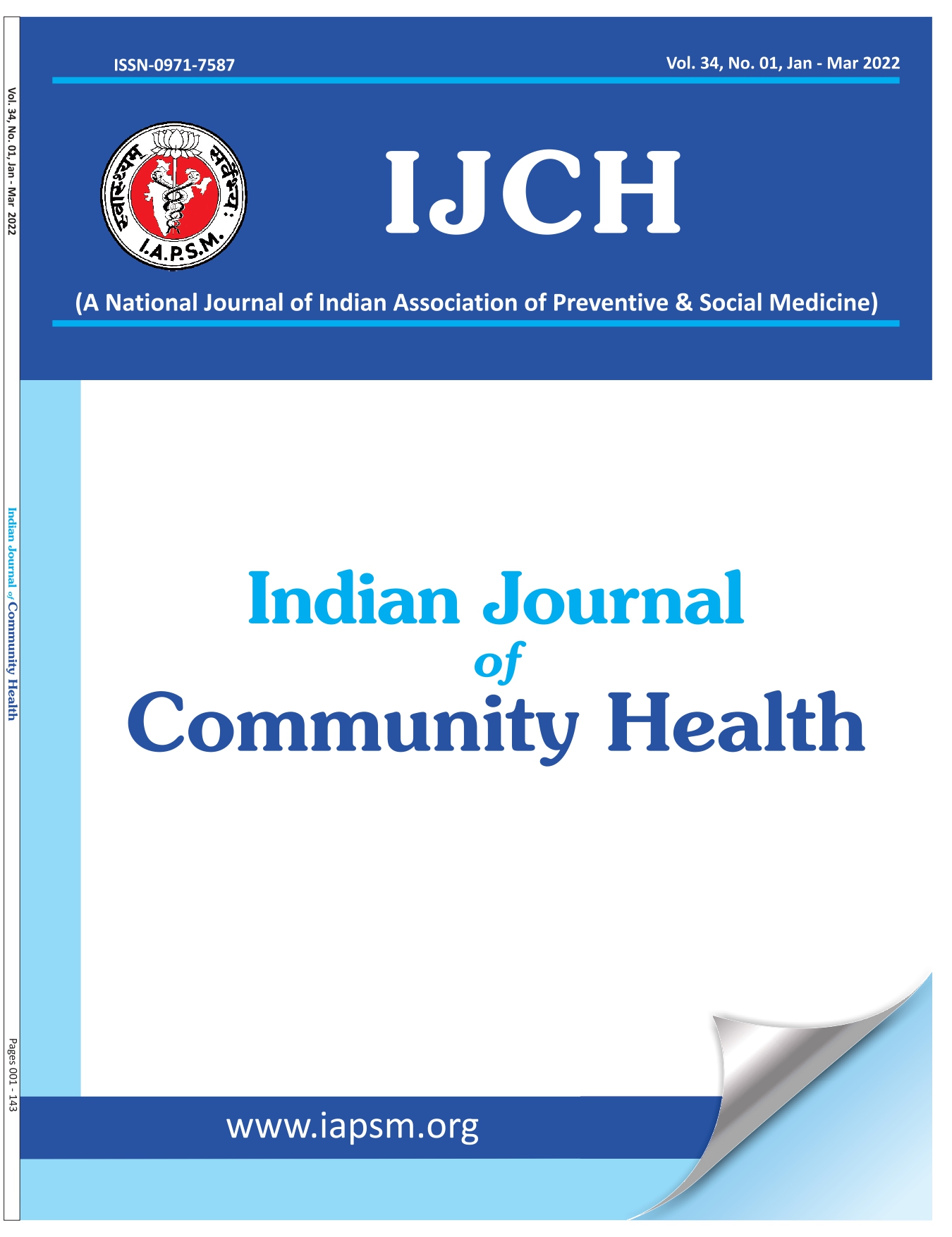Mental Health among Health Care Providers due to Workplace Violence
DOI:
https://doi.org/10.47203/IJCH.2025.v37i02.026Keywords:
Workplace Violence, Mental Health, Fear, Post-Traumatic Stress Symptoms, Difficult to SleepAbstract
Background: Undergraduate students, especially those in medical and engineering fields, face significant academic pressures coupled with other stressors which makes them susceptible to mental distress, including anxiety, depression, and sleep disturbances. Objective: To assess and compare mental distress among undergraduate medical and engineering students and factors affecting it. Materials and Methods: A comparative cross-sectional study was conducted among 300 students (150 each from medical and engineering colleges of Delhi, India. Data was collected using a structured online questionnaire, which included demographic details and the Kessler Psychological Distress Scale (K10) to assess mental distress. Results: We observed that 61.3% of participants were likely to have some sort of stress disorder, with higher prevalence in medical students (62.7%) than in engineering students (60%). Longer sleep latency was significantly associated with moderate to severe stress disorders (p < 0.001). Association of gender with mental distress was also found to be significant (p value= 0.022). Conclusions: Medical students were more prone to severe stress disorders compared to engineering students. Prolonged sleep latency was a strong predictor of psychological distress. Early intervention and mental health support are essential for improving student well-being.
Downloads
References
Kamchuchat C, Chongsuvivatwong V, Oncheunjit S, Yip TW, Sangthong R. Workplace violence directed at nursing staff at a general hospital in southern Thailand. J Occup Health. 2008;50(2):201–7.
World Health Organization. Violence against health workers [Internet]. Geneva: WHO; [cited 25/04/2025]. Available from: http://www.who.int/violence_injury_prevention/violence/workplace/en/
Dey S. Over 75% of doctors have faced violence at work, study finds. Times of India [Internet]. 2015 May 4 [cited 25/04/2025]. Available from: https://timesofindia.indiatimes.com/india/Over75-of-doctors-have-faced-violence-at-work-studyfinds/articleshow/47143806.cms
Nelson R. Tackling violence against healthcare workers. Lancet. 2014;383(9926):1373–4.
Yang ZJ. Altruism during Ebola: risk perception, issue salience, cultural cognition, and information processing. Risk Anal. 2016;36(6):1079–89.
Itzhaki M, Bluvstein I, Peles-Bortz A, Kostistky H, Noy DB, Filshtinsky V, et al. Mental health nurses’ exposure to workplace violence leads to job stress, which leads to reduced professional quality of life. Front Psychiatry. 2018;9:59.
Kitaneh M, Hamdan M. Workplace violence against physicians and nurses in Palestinian public hospitals: a cross-sectional study. BMC Health Serv Res. 2012;12:469.
Tawiah PA, Appiah-Brempong E, Okyere P, Adu-Fosu G, Ashinyo ME. Prevalence, risk factors and psychological consequences of workplace violence among health workers in the Greater Accra region, Ghana: a cross-sectional study. BMC Public Health. 2024;24(1):563.
Xiao Y, Chen T, Zhu S, Li C, Zong L. Factors associated with workplace violence against Chinese healthcare workers: an online cross-sectional survey. Front Public Health. 2024;12:1295975.
Hong S, Nam S, Wong JYH, Kim H. Post-traumatic responses to workplace violence among nursing professionals: a collaborative and comparative study in South Korea and Hong Kong. BMC Nurs. 2023;22(1):354.
Zhong D, Liu C, Luan C, Li W, Cui J, Shi H, Zhang Q. Mental health problems among healthcare professionals following the workplace violence issue: mediating effect of risk perception. Front Psychol. 2022;13:971102.
Downloads
Published
How to Cite
License
Copyright (c) 2025 Sunita Patel, Ashish Mishra, Arindam Maiti, Arvind Sharma, Ankur Nayan, Jagmohan Singh Dhakar

This work is licensed under a Creative Commons Attribution-NonCommercial-NoDerivatives 4.0 International License.





